“Biscuit Run”
“Biscuit Run” is a Unity-built puzzle game in which the player controls two characters simultaneously, navigating them at speed through minimalistic maze levels filled with obstacles and moving walls. Featuring challenging gameplay that tests problem-solving skills and coordination, players of this game, will need to use both sides of their brain to progress through the levels.
This will be determined over an iterative design process, but currently the working idea could be categorised as a Puzzle, Strategy, Action platformer game:
‘Action’ because adding a time-limit would add a sense of urgency, challenge what is possible, and encourage players to make quick decisions and sometimes rely on their reaction speed and co-ordination).
‘Puzzle’ because there will be a bit of brainwork to figure out how to solve the obstacles in the scene, and…
‘Strategy’ because there will be more than one way to approach some challenges and players may come up with different strategies for approaching the challenges they are faced with.
This concept creation process uses an iterative design process, with a lot of research done early to determine what kind of game features I can implement with Unity within the timeframe.
The first spark of an idea came from envisioning a kind of maze-like scene with walls in two contrasting colours on a black background. Two simple blob-like characters matched the colours of the walls, essentially giving the basic impression of a two-colour game scene. The walls shift or change position somehow, with a gentle ‘tocking’ sound. (see image below)
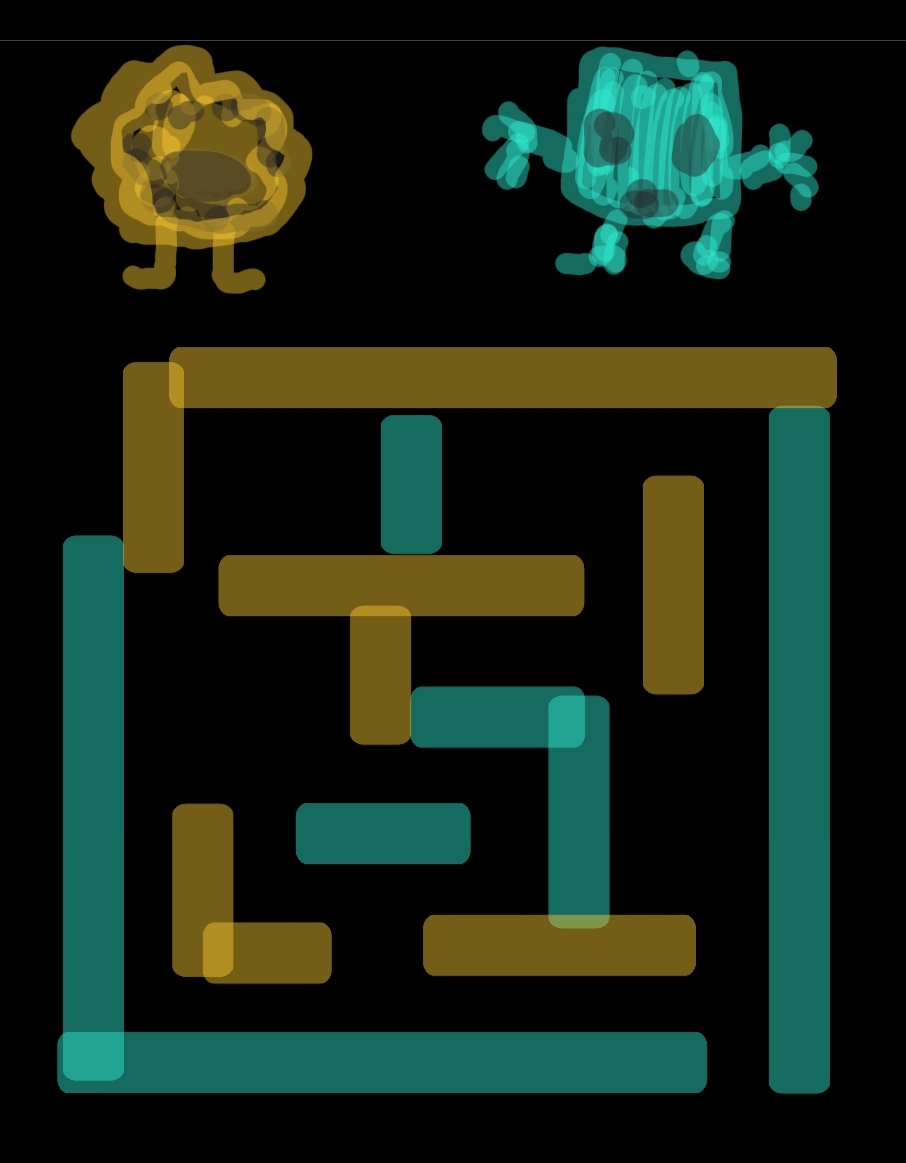
Illustration of the initial spark of an idea (ABOVE)
I further explored this initial game idea through researching what can be done within the Unity ecosystem: how challenging it would be to move walls, whether Tilemaps could easily be altered during runtime, could it be possible for me to use Navmesh to guide AI around a scene that might change during runtime. I explored different possibilities and then played a bunch of games that use maze-like scenes, moving walls, simple player actions, and thought about what could make my idea fun to play.
While exploring existing games, I discovered a few game features that fit with my evolving game concept. One game, “In the Grey” (Gamaverse.com n.d.) was particularly inspiring because:
(a) it had two player characters (like my original idea), and…
(b) because it used simple level design that is maze-like, and crucially…
(c) it involved the fun challenge of controlling and keeping track of two moving characters at once and this made my brain light up. Woot! (see image below)
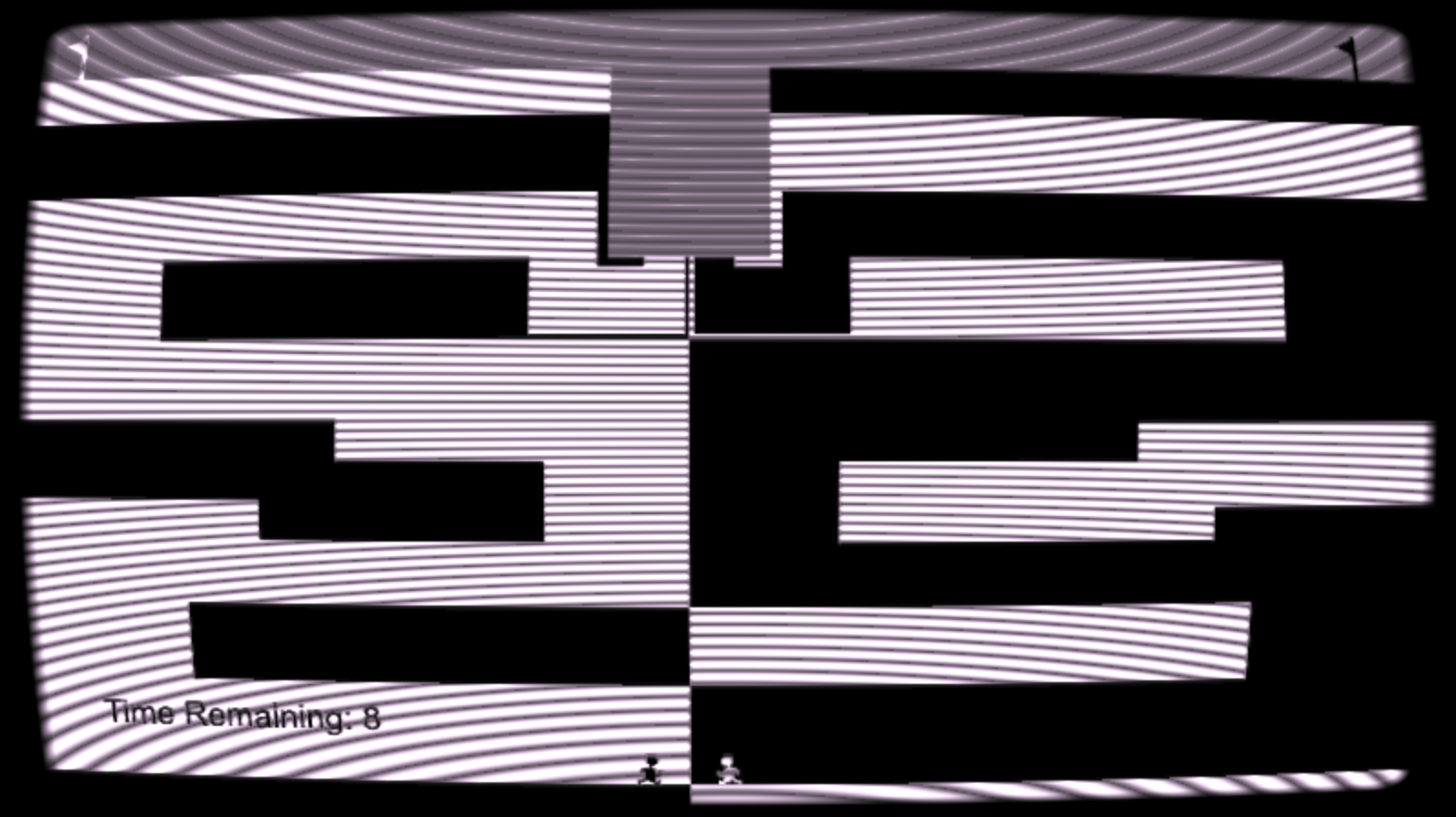
Image of a scene from "In the Grey" (Gameaverse.com n.d) [screenshot 2023](ABOVE)
Other influences include:
The website ‘Gamesverse’ was inspirational for introducing me to so many examples of different types of simple, fun games that would be achievable to make in the remainder of the semester (heart : https://gamaverse.com/search/?q=maze )
Parts of the process of testing the developing game concept's viability are illustrated below:
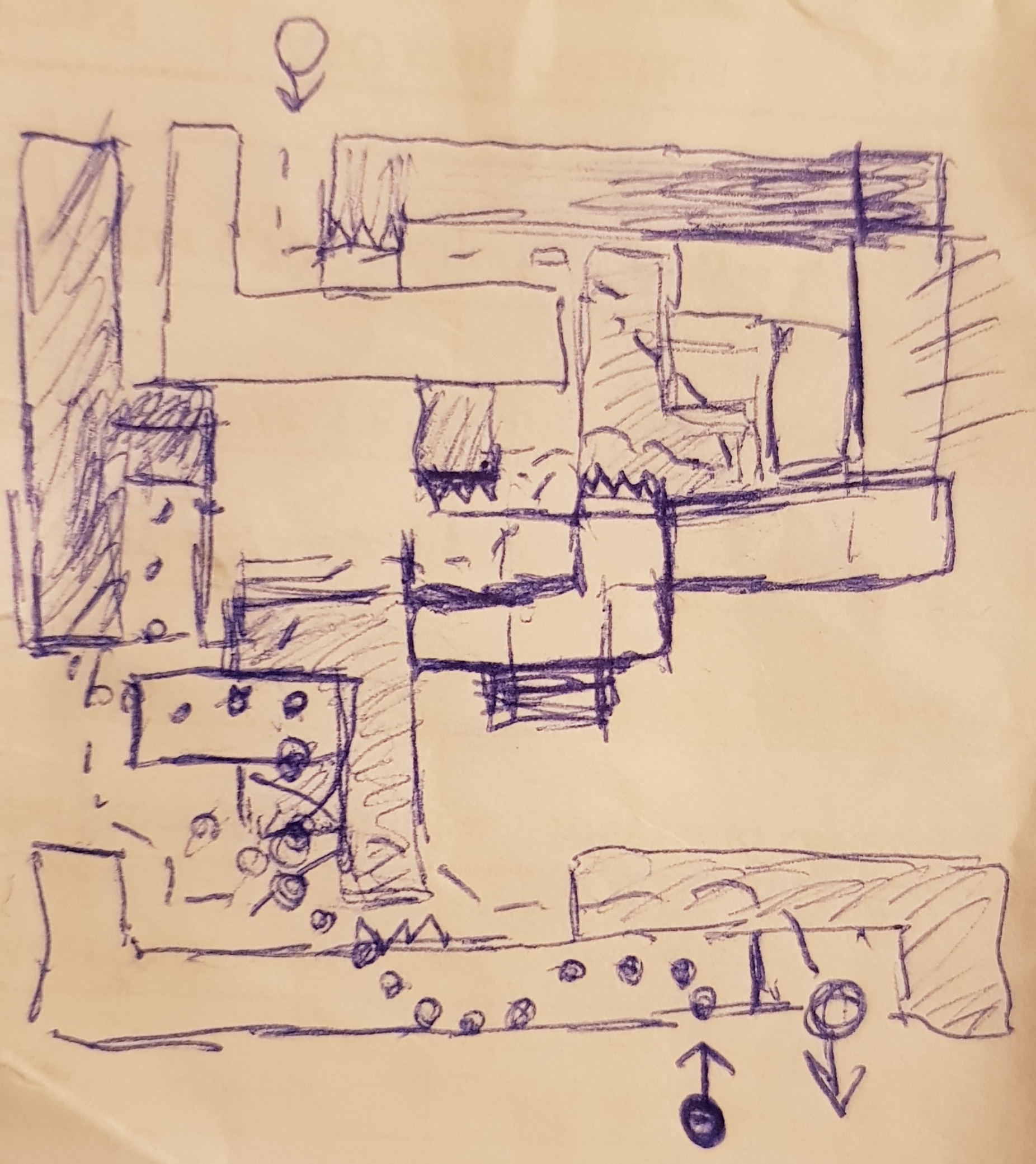
A very rough proof of concept sketch that shows it can be done. Hard to read ...so it’s a good thing I understand it. (ABOVE)

A very rough scene sketch. The two-characters (indicated top-left) will finish bottom-right through separate (easy) paths. (ABOVE)
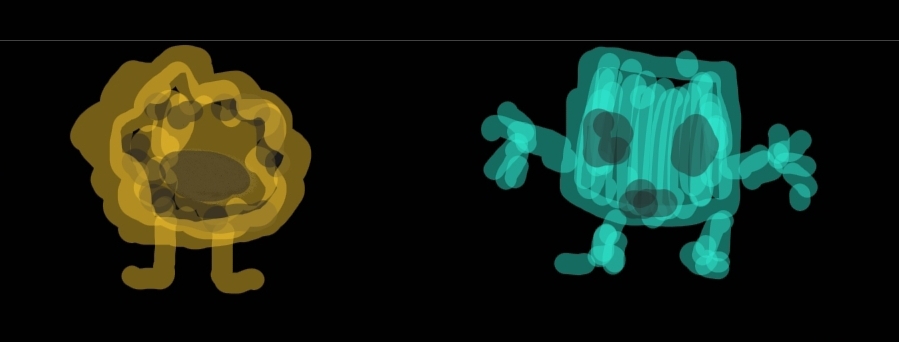
Quick sketch of character ideas (ABOVE)
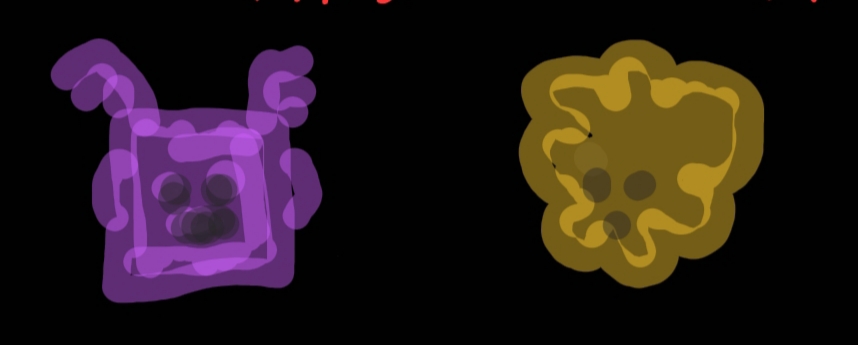
Rough sketch of other character ideas (ABOVE)
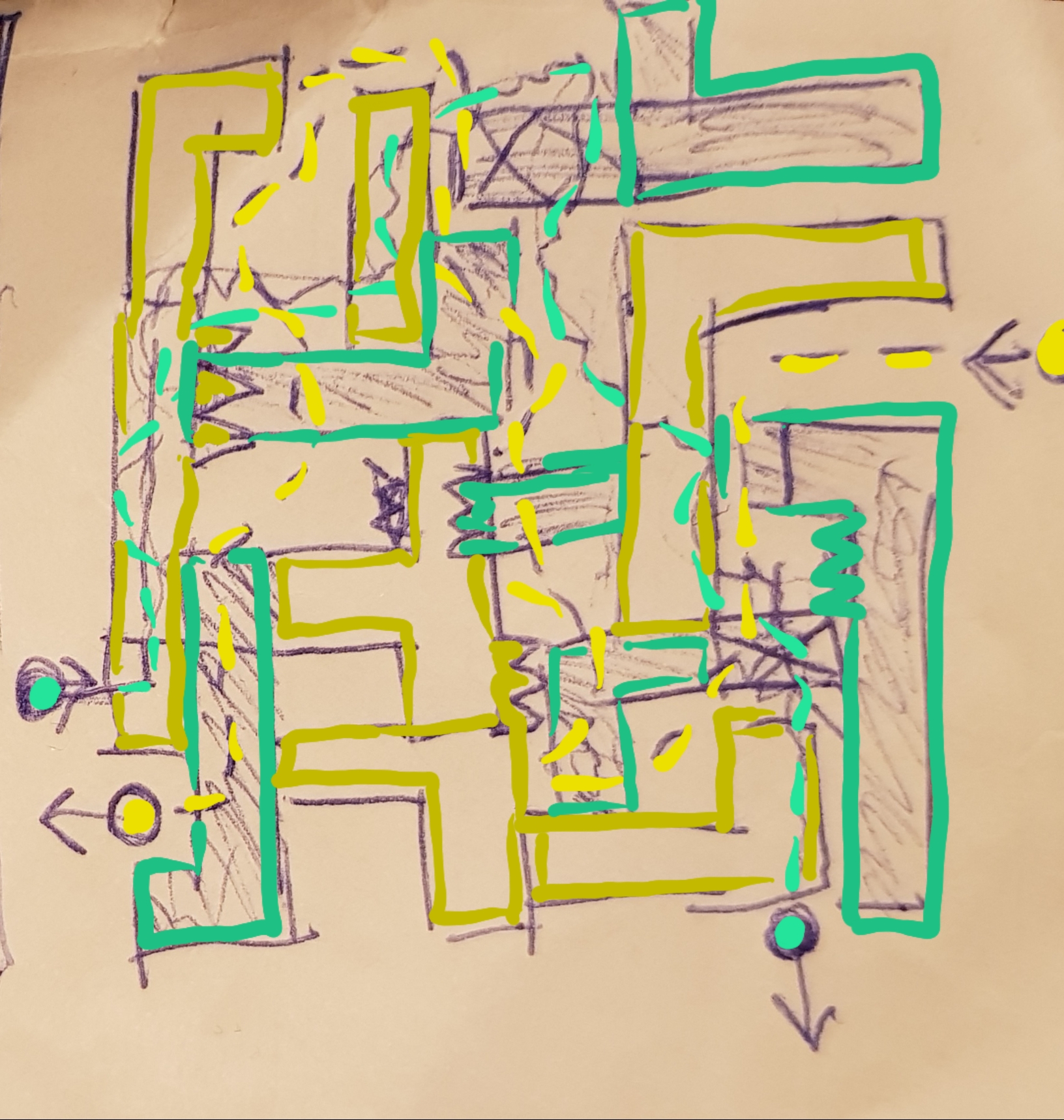
Hideous sketch of a potential puzzle scene showing two paths with divergent physics and game-wall rule (ABOVE)
Not hardcore gamers obviously…. ;-)
…But the people who would be interested in this game would be those who may spend time on their computer, who want a short game in their leisurely time and would like to take on a novel challenge and brief change of pace from their daily routines. We’re talking opportunists, men and women, intellectual brainy types, people who - on a rainy Sunday morning - want some entertainment and also a fun slightly mental puzzle to take on.
Because the player is controlling 2 characters at once, they’ll get a brain workout (a cerebral challenge) despite the simplicity of the layout. The game will be as much a ‘novel entertainment’ as it is a fast paced mental challenge and coordination tester, so this should appeal to the everyday gen X, Gen Y, or millennial person, who grew up playing games casually.
So basically, the target audience for this game would be casual gamers, anyone who wants a fun and tricky brain-function teaser. The simple game mechanics and web-based platform make this style of game accessible to wide range of people: easy to play, hard to master! Meanwhile, its interesting ‘double-handed’ gameplay and abstract level-design should appeal to those people who are seeking a more cerebral experience.
I expect that, because of the minimal scene design combined with fun and interesting game mechanics, this game could also be of interest to other beginner game developers. In my own experience, so many other inspiring games lose their appeal as future game concept models because they are not achievable or accessible to the beginner game developer’s skill level.
There seems to be a sub-genre of puzzle games that challenge problem-solving abilities as well as coordination. Players who enjoy that kind of game will find “Biscuit Run” to be an engaging experience. Its 'mirror-world' minimally designed scenes combined with dual-character-control gameplay offer a twist on traditional puzzle games and is quite an addictive novelty.
“Multifocal attention is the ability to simultaneously attend to multiple objects, and is critical for typical functioning. Although adults are able to use multifocal attention, little is known about the development of this ability.” (Blankenship et al 2020)
Apparently not much is known about multifocal attention, but according to Blankenship et al (2020) it’s usually developed by age 6. …And according to me, if it’s something that develops then we can safely assume it’s something that can be nurtured.
Practicing multifocal attention through one player controlling two characters within the game, will give players a mind-buzz, and the gravitational physics-switching mid-game will offer a special coordination challenge that will test player dexterity. The time-limited puzzle-levels simultaneously push players reaction speed and decision-making abilities. They’ll either be impressed with what their brains can adjust to with the fun, fast and complex tasks, or die laughing at the ‘brain-wiggle’.
Narrative is merely an aside in this puzzle, quick-action, strategy game. Simplicity of design combine with interesting physics features that manipulate the characters and add excitement to the gameplay. The main objective of this game is to navigate two blob-like characters through maze-like scenes with walls in two contrasting colours, on a dark background. The game will include moving square obstacles, shifting walls, time-activated spike objects, and minimal, twisting courses that players can overcome. The need to steer two characters at once to reach the goal position within the time-limit adds a layer of excitement and difficulty.
Some obstacles may move through a scene by Unity’s 2D physics and gravity, while others are the scripted moving blocks and walls. The game features simple level design, and the game mechanics are built around the player controlling and keeping track of two player-characters at once. The two characters match the colours of the walls and this is built into the game to help players understand the game mechanics and how the characters will traverse the platform scenes.
While the current working idea for this game concept involves a single player controlling two characters, there is the built-in option to play cooperatively with another player by controlling one character each thereby adjusting the difficulty level and offering an opportunity for people to socialise while enjoying the challenges.
Gameaverse.com n.d. Last viewed Sat 15th April 2023 <https://gamaverse.com/search/?q=maze> [Also mentioned games pages: https://gamaverse.com/in-the-grey-game/ , https://gamaverse.com/vive-le-roi-2-game/ , https://gamaverse.com/simply-ugh-maze-ing-game/ , https://gamaverse.com/bouncetown-game/ , https://gamaverse.com/color-spies-game/ , https://gamaverse.com/exit-the-maze-game/ , https://gamaverse.com/unstable-squares-game/ , https://gamaverse.com/not-just-snake-game/ , https://gamaverse.com/jump-r-game/ , https://gamaverse.com/gravity/ ]
Blankenship, T. L., Strong, R. W., & Kibbe, M. M. (2020). Development of multiple object tracking via multifocal attention. Developmental psychology, 56(9), 1684–1695. https://doi.org/10.1037/dev0001064 Last viewed 15th April 2023 <https://www.ncbi.nlm.nih.gov/pmc/articles/PMC8603249/ >
Did you like this post? Tell us